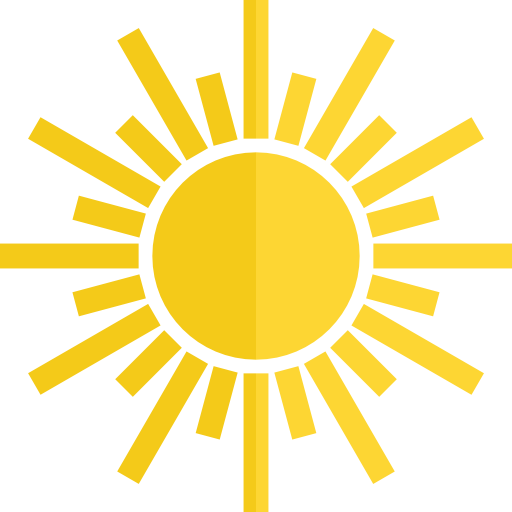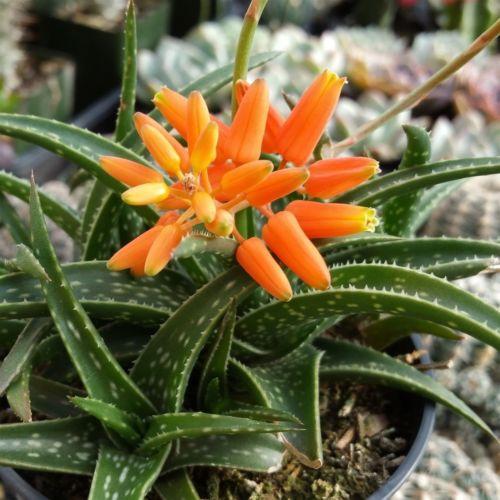Agave Succulents 'Care and Growing Guide' - Everything You Need To Know!
Updated: January 28, 2025

Agave succulent plant has been a silent witness to the passage of time, its rugged beauty and resilience inspiring cultures for centuries. Renowned for its exceptional hardiness, Agave is an extremely drought-tolerant succulent that stores water in its thick, fleshy leaves, allowing it to thrive in conditions where others would perish. This low-maintenance marvel requires minimal care, making it perfect for busy gardeners or those new to succulent cultivation.
Agave Succulent Overview

Agave is a genus of succulents native to Mexico, South America, and the Western United States. These plants are slow-growing and are noted for large eye-catching leaves.
Growing up to 20 feet in height, this variety of succulents is planted in the spring or early fall. It is interesting to note that Agave has a large variety of diverse species.
There are plants in this family that are small in size as well and have soft spineless leaves. In addition, this species is not very demanding and can be grown on both grounds as well as in pot.
Agave plants bloom in attractive yellow, green, and white colors throughout their growing season. The flowers are bell-shaped and have subtle shades to complement any home décor.
Not many people know that most Agave varieties die once the blooms produce berry seed pods.
These succulents are drought-tolerant and can easily survive in colder regions including Pacific Northwest and Canada.
With over 200 species spread across the Americas, Agave's diversity is matched only by its durability, tolerating intense sunlight, scorching temperatures, and neglect. Whether you're drawn to its architectural splendor, vibrant flowers, or hassle-free charm, Agave is a succulent superstar deserving of attention - and with the right care, it will reward you with stunning foliage and a lifetime of fascination.
Agave Flowers: A Once-in-a-Lifetime Spectacle
Agaves are monocarpic, meaning they only bloom once in their lifetime, typically after 10 to 20 years. When an agave finally reaches maturity, it will produce a massive central floral stalk during the spring or summer months. This towering stalk can grow anywhere from 15 to 35 feet tall, leading to an impressive bloom period that lasts around three to four months.
The agave's flowers can appear along the entire stalk or at the ends of branches that sprout from it, depending on the variety. These bell-shaped blooms range in color from white to yellow and green.
They are particularly known for their sweet, nectar-filled scent, which becomes more potent at night to attract pollinators such as moths and bats. The nectar is so rich in sugars that it is often used as a natural sweetener.
Once the agave blooms and produces seed pods, the plant begins to die, as is characteristic of monocarpic plants.
The central stalk will eventually fall, so it's important to remove it to prevent damage to nearby plants.

While the main plant dies, many agave species will develop small offshoots, called bulbils, along the central stalk. These bulbils can be easily twisted off and replanted to propagate new agave plants. After flowering, you’ll need to dig up the dead plant and rhizome to make room for new growth.
Our Top 12 Types of Agave Plants are listed just below our Agave plant care section.
Agave Plant Care
Caring for your Agave plant requires attention to its specific needs to ensure optimal growth and health. With proper care, these stunning succulents can thrive indoors or outdoors, bringing architectural beauty and low-maintenance elegance to any space. In this guide, we'll delve into the essential elements of Agave plant care, covering the basics and beyond.
Quick Reference

Bloom Season

Flower Color

Growth Rate

Hardiness Zone

Mature Size

Plant Type

Sun Exposure

Toxicity

Watering Needs
Understanding the Light Requirements of Agave Succulents
Agave plants thrive in plenty of sunlight, making them natural sun-lovers. They perform best when exposed to bright, direct sunlight for several hours a day, which supports their optimal growth and development.
- When planted indoors, it is best to keep your succulent near a west or south-facing window. While Agaves can survive in partial shade, their growth is far more robust when they get enough light.
- For outdoor cultivation, they prefer to stay in bright direct sun for a few hours every day. Having said that, they can survive in partial shade as well. Ensuring they receive ample sunlight is key to maintaining their health and striking appearance.
Watering Agave: A seasonal Guide to Optimal Hydration

- Agave plants need infrequent watering, with soil allowed to dry out completely between waterings to prevent root rot.
- Due to their origin in dry and arid regions, Agave succulents are drought-tolerant and require minimal watering.
- During the active growing season, which runs from spring to fall, water the plants more frequently to support their growth.
- However, watering should be reduced significantly in the winter, to around once a month, as Agaves enter a dormant phase.
- It’s important to note that plants grown in containers will need more frequent watering compared to those planted directly in the ground, as the soil in pots tends to dry out faster.
- Additionally, avoid watering the plants from above to prevent moisture from accumulating in the center of the rosette, which can lead to rot.
Choosing the Best Soil & Fertilizer For Your Agave
Agave succulents grow well in regular potting soil or a rich fast-draining soil mix. A well-drained soil helps to remove excess moisture and minimizes the chances of root rot and other soil-borne diseases. Planet Desert specializes in succulents and has specialized succulent potting soil that includes an organic substrate with mycorrhizae to help with the growth of a healthy root system to help your succulents thrive.
Fertilize your Agave plant during the spring season. Fertilization is usually required once a year of your succulent and once the plant is matured, it can survive on its own.
Suitable Temperature & Hardiness Zones: Tips for Healthy Agave
Agave plants prefer warm temperature for healthy growth. To ensure the health of your agave plant, avoid exposing it to extreme temperatures or sudden fluctuations, as this can cause stress and damage to the plant.
- When growing indoors, the ideal temperature range for Agave plants is between 65°F and 80°F. They thrive in warm environments but can be sensitive to cold temperatures.
- For outdoor cultivation, Agave succulents prefer warm growing conditions and are hardy in USDA zones 5 to 11. Agaves can tolerate heat well but should be protected from frost and freezing temperatures.
As these succulents prefer warm growing conditions, it is advised to avoid keeping them in areas with lower temperatures as it can cause freeze damage. Moreover, Agaves are adaptive to low humid conditions.
Our Favorite Types of Agave plants
Just like other succulents, Agave houseplants are low-maintenance and easy to care for. They can be grown indoors and make a good option for beginners. Interestingly, Agave has more than 200 species in the family and this gives a wide variety to choose from!

1
Blue Agave (Agave tequilana)
BUY AT PLANET DESERTkeypoints:
- USDA Hardiness Zones: 9, 10
- Blooming Period: Summer
- Mature Size: 8 ft. tall, 10 ft. wide
- Flower Color: Pale green, Yellow, red
The Blue Agave (Agave tequilana) is a majestic succulent renowned for its striking blue-gray foliage and unparalleled hardiness, thriving in full sun and well-draining soil with minimal care. Extremely drought-tolerant, it stores water in its fleshy, serrated leaves, making it perfect for water-conscious gardeners and landscapers. Its architectural shape adds sophistication and desert elegance to landscapes, whether used as a statement piece, border plant, or container specimen. Ideal for xeriscaping and Mediterranean-style gardens, this resilient succulent embodies effortless, drought-tolerant landscaping, requiring infrequent watering and ensuring years of beauty with minimal upkeep. Learn more....

2
Agave Blue Glow
BUY AT PLANET DESERTkeypoints:
- USDA Hardiness Zones: 9, 10, 11
- Blooming Period: Spring, early summer (Rarely flowers)
- Mature Size:2 ft. tall, 3 ft. wide
- Flower Color: Greenish, Yellow
Agave 'Blue Glow' is compact succulent that radiates vibrant, blue-green foliage with delicate, pink to red margins, emitting a soft, glowing effect. These ornamental succulents are slow-growing. They reach up to 2 feet in height and are known to form solitary rosettes of blue-green leaves. You can grow this species in decorative pots to give your room a makeover. Its compact, rosette shape and relatively small size make it an ideal choice for modern, water-conscious landscaping and succulent arrangements, providing year-round interest and beauty with minimal maintenance. Learn more...

3
Century Plant (Agave americana)
BUY AT PLANET DESERTkeypoints:
- USDA Hardiness Zones:8, 9, 10, 11
- Blooming Period: Once in a lifetime
- Mature Size: 6 ft. tall, 12 ft. wide
- Flower Color: Greenish yellow
Agave americana is a majestic and iconic succulent renowned for its impressive size, striking appearance, and remarkable longevity. With its origin in Mexico, this species of flowering plant is grown globally. Also known as the Century plant, it is said to attract hummingbirds. Apart from this, the succulent has long gray-green leaves. This drought-tolerant giant boasts thick, fleshy leaves with sharp spines and a vibrant, blue-green color. Although it's often said to take 100 years to bloom, Agave americana typically flowers after 10-30 years, producing a towering, 15-30 foot stalk adorned with yellow blooms. Learn more...
Related Article
If you want to learn more about Century plants, you can read our detailed article All About Century Plants – Everything You Need to Know!

4
Hedgehog Agave (Agave stricta)
BUY AT PLANET DESERTkeypoints:
- USDA Hardiness Zones: 8, 9, 10, 11
- Blooming Period: Late spring, Early summer
- Mature Size: 20 in. tall, 20 in. wide
- Flower Color: Reddish purple
The Hedgehog Agave renowned for its striking, spherical shape and protective, needle-like leaves. The plant produces red flowers and has dark green leaves which give it a porcupine-like appearance. Native to Mexico, Hedgehog Agave thrives in full sun to partial shade and well-draining soil, requiring minimal watering and care. Its small size and spiny texture also make it a popular choice for succulent arrangements and architectural landscapes, providing year-round interest and protection from pests. Learn more...

5
Agave Blue Flame
BUY AT PLANET DESERTkeypoints:
- USDA Hardiness Zones: 8, 9, 10, 11
- Blooming Period: Summer
- Mature Size:3 ft. tall, 4 ft. wide
- Flower Color: Yellow, Green
Agave 'Blue Flame' is a stunning, succulent plant known for its striking appearance. This hybrid agave features rosettes of fleshy, powdery-blue leaves with a golden yellow center, resembling a flame. The leaves are slightly wavy and have tiny, sharp teeth along the edges. It adds architectural interest and drought-tolerant beauty to landscapes and container gardens. Its vibrant blue color deepens in full sun, and in summer, a tall spike of yellow flowers can emerge. This low-maintenance plant thrives in well-draining soil and full sun to partial shade, making it perfect for water-conscious gardeners and succulent enthusiasts. Learn more...

6
Foxtail Agave (Agave attenuata)
BUY AT PLANET DESERTkeypoints:
- USDA Hardiness Zones:9, 10, 11
- Blooming Period: Winter, Spring
- Mature Size: 4 ft. tall, 7 ft. wide
- Flower Color: Greenish, Yellow
The Foxtail Agave is another stunning succulent prized for its unique, curved inflorescence resembling a fox's tail. Reaching up to 4 feet tall, this elegant plant boasts soft, gray-green leaves with a delicate, buttery texture and a striking, trunk-like stem. Foxtail Agave thrives in partial shade to full sun and well-draining soil, requiring moderate watering and care. Its architectural shape and relatively compact size make it perfect for modern landscapes, containers, and indoor spaces. With its beautiful foliage and striking flower stalk, Foxtail Agave adds a touch of sophistication and desert charm, earning its popularity among gardeners, landscapers, and succulent enthusiasts. Learn more....

7
Agave Victoriae Reginae ‘Queen Victoria Agave’
BUY AT PLANET DESERTkeypoints:
- USDA Hardiness Zones: 7, 8, 9, 10, 11
- Blooming Period: Mid Summer
- Mature Size: 1 ft. tall, 2 ft. wide
- Flower Color: Creamy White
The Queen Victoria Agave is a compact, majestic succulent renowned for its striking, rounded foliage and regal appearance. This royal agave succulent is unusual as it does not bloom for about two to three decades. These plants are small in size and have leaves with black tips. Its elegant shape make it perfect for containers, rock gardens, and indoor spaces, while its slow growth and long-lived nature ensure a lasting, majestic presence. Learn more...

8
Artichoke Agave Plant (Agave parryi 'truncata')
BUY AT PLANET DESERTkeypoints:
- USDA Hardiness Zones: 5, 6, 7, 8, 9, 10
- Blooming Period: Summer
- Mature Size:2 ft. tall, 4 ft. wide
- Flower Color: Yellow
The Artichoke Agave or Mescal agave is a striking succulent resembling a giant artichoke, with compact, rosette-shaped foliage and protective, leafy spines. Its unique shape and relatively small size make it perfect for containers, borders, and rock gardens, adding a touch of desert charm and architectural elegance to any landscape. This plant is frost-hardy and usually planted in outdoor settings. It forms rosettes of broader leaves and has a compact size. Learn more...

9
Agave kavandivi
BUY AT PLANET DESERTkeypoints:
- USDA Hardiness Zones: 9, 10, 11
- Blooming Period: Summer
- Mature Size: 5 ft. tall, 3.5 ft. wide
- Flower Color: Yellow
Agave kavandivi, a rare and captivating succulent, boasts striking, compact rosettes with vibrant, blue-green leaves and intricate, yellow-green striations. This species of Agave is drought-tolerant and originates from the Mexican state of Oaxaca. It is a small rosette-forming succulent, having pale blue leaves and an overall pleasing look. Learn more...

10
Butterfly Agave (Agave Potatorum)
BUY AT PLANET DESERTkeypoints:
- USDA Hardiness Zones: 9, 10, 11
- Blooming Period: Winter
- Mature Size: 2 ft. tall, 2 ft. wide
- Flower Color: Light green, yellow (Tinged with red)
The Butterfly Agave is a captivating succulent with delicate, butterfly-like foliage featuring vibrant, blue-green leaves with intricate, yellow-green striations and delicate, curly edges. Its unique, curved leaves and elegant shape make it perfect for containers, rock gardens, and indoor spaces, adding a touch of whimsy and desert charm to any landscape. With its relatively small size and slow growth, Butterfly Agave is ideal for succulent enthusiasts and collectors seeking a rare, beautiful addition. Learn more...

11
Agave isthmensis 'Rum Runner'
BUY AT PLANET DESERTkeypoints:
- USDA Hardiness Zones: 9, 10, 11
- Blooming Period: Mid Summer, Early Fall
- Mature Size: 10 in. tall
- Flower Color: Golden-Yellow
Agave isthmensis 'Rum Runner' is a stunning, compact succulent boasting vibrant, blue-green foliage with delicate, yellow-green striations and a distinctive, rounded shape. This drought-tolerant gem features sharp, reddish-brown spines and a striking, symmetrical arrangement. Native to Mexico's coastal regions, 'Rum Runner' thrives in full sun to partial shade and well-draining soil, requiring minimal watering and care. Its unique, rum-colored accents on the leaves' edges give it a distinctive appearance, making it perfect for containers, borders, and rock gardens, adding a touch of tropical elegance to any landscape. Learn more....

12
Agave titanota 'Black and Blue'
BUY AT PLANET DESERTkeypoints:
- USDA Hardiness Zones: 10, 11
- Blooming Period: Spring, Autumn
- Mature Size: 2 ft. tall, 3 ft. wide
- Flower Color:Blue Green
Agave titanota 'Black and Blue' has a vibrant, blue-green foliage with deep black spines and distinctive, dark blue-green margins. The contrasting black and blue hues create a dramatic, two-tone effect, making it a popular choice for containers, rock gardens, and indoor spaces. Its relatively small size and slow growth make it perfect for succulent enthusiasts and collectors seeking a rare, beautiful addition. Learn more...
Discover the Traditional and Modern Uses of Agave
Agave, a versatile and ancient plant, has been utilized for centuries in various ways. Traditionally, agave has been a vital crop for many cultures, particularly in the Americas.
The Aztecs and Mayans prized Agave tequilana, also known as blue agave, for its sweet sap, used to produce pulque, a fermented beverage.
This tradition continues today, with agave being the primary ingredient in tequila production.
In addition to its role in spirits, agave has long been used for medicinal purposes. Agave americana, has been used to treat wounds, burns, and skin conditions due to its anti-inflammatory properties. It is highly valued for their role in producing traditional Mexican spirits like mezcal, which are renowned worldwide for their distinct flavors and cultural significance.

In addition to its role in liquor production, agave is also the source of agave syrup, a natural sweetener favored for its low-glycemic index compared to sugar or honey. Light agave syrup has a neutral flavor, while amber boasts a subtle caramel taste, and dark agave syrup offers a bold flavor similar to molasses or golden syrup. This versatility makes it a popular choice for sweetening beverages and foods in a healthier way.
Beyond syrup and spirits, agave fibers are traditionally used in Mexico to create textiles, ropes, and even paper due to their strength and durability. In fact, agave fibers were historically used to produce henequen rope, which was vital for shipbuilding. Agave-based skincare products leverage its moisturizing and anti-aging properties.
Various parts of the agave plant are also edible when cooked or processed, including the flowers, leaves, basal rosettes, and sap. However, the raw sap is mildly toxic to both humans and pets, so care must be taken to ensure it's properly prepared before consumption. Additionally, agave is sometimes used in traditional medicine for treating wounds and inflammation, though modern applications are limited due to potential side effects.
In recent years, agave has also gained attention for its potential in biofuel production and soil remediation. Agave spp. are being researched for their ability to tolerate drought and saline conditions, making them ideal for reforestation efforts.
How to Propagate Agaves?
You can propagate Agave plants by the following methods:
- Propagation from cuttings
- Seed propagation
- Propagation by cloning
- Propagation by bulbils
How to grow an Agave plant from cuttings?
- Growing an Agave plant from cuttings is a straightforward and effective method of propagation. Since Agaves are drought-tolerant succulents, they thrive in warm, dry conditions, and the cuttings establish quickly once planted.
- With the help of a clean sharp knife, remove pups or baby plants from the mother Agave plant.
- Make a straight & even cut that is around 1.1 inch below the starting of the lowest leaf between the plant and the pup.
- Allow the cutting to callous over for a few days to reduce moisture loss and prevent rot.
- Now, fill your planter with fast-draining soil and plant the pups gently.
- In two weeks, root formation will start to take place.

Seed propagation
- To begin with, fill the container with a well-drained soil mix. Ensure the container has drainage holes.
- Sow the seeds at a distance of 0.39 inches.
- Now, add a layer of perlite, sand, or fine grit. Water lightly to keep it moist.
- Germination occurs shortly within 1 to 2 weeks. After germination, place the container in sunlight for a few hours each day. However, make sure to not overexpose it as it can cause sunburn.
- Remember to water frequently during one month of the process. After five months, you can reduce as mature Agaves need less watering as compared to young ones.
Propagation by cloning
Also known as Micropropagation or Tissue culture, this method of propagation is widely used by professional gardeners. Most Agave species are multiplied by using this technique, especially when there are no cuttings or seeds available.
- Select a healthy Agave plant to obtain tissue samples from, ideally one free of disease and pests.
- Cut a small section of plant tissue from the Agave (this could be a piece of the meristem or other vegetative tissue).
- Sterilize the tissue in a controlled environment to eliminate any contaminants like bacteria or fungi.
- Place the tissue in a sterile culture medium that contains the necessary nutrients, growth hormones, and minerals to encourage cell growth.
- Incubate the culture in a controlled environment, typically in a lab, with the correct light, temperature, and humidity levels.
- Allow the tissue to multiply into multiple small plantlets (clones) over time.
- Once the plantlets have developed sufficiently, transfer them to individual containers filled with a well-draining soil mix.
- Gradually acclimatize the plantlets to regular growing conditions, starting with indirect light and eventually moving them to brighter light.
Propagation by bulbils
This procedure is quite easy. Bulbils grow on the stems of Agaves after flowering. New Agave plants are produced by planting bulbils. Once planted, they will begin to produce tiny roots. Keep in mind to water infrequently as they are prone to root rot.
- Wait until the Agave plant has flowered and begins to produce bulbils (small plantlets) on its flower stalks.
- Gently remove the bulbils from the stem, ensuring not damage their base.
- Allow the bulbils to air-dry for a day or two, giving them time to callous over before planting.
- Prepare a pot with well-drained soil such as a cactus mix or a blend of perlite and sand.
- Plant the bulbils gently into the soil, burying the base slightly to stabilize the plantlet.
- Place the pots in a bright location with indirect sunlight.
- Water sparingly, allowing the soil to dry out between watering to prevent root rot.
- Over time, the bulbils will develop roots and start growing as new independent plants.
Protecting Agave From Winter's Chill: Overwintering Tips
To overwinter Agave successfully, begin preparations 4-6 weeks before the first frost by gradually reducing watering and fertilization. Prune dead or damaged leaves to prevent moisture accumulation and repot in well-draining soil to prevent waterlogged soil. Bring potted Agave indoors to a bright, frost-free location 40-60°F or mulch around the base to retain moisture and regulate soil temperature.
Cover plants with breathable materials like burlap, straw, or frost cloth, and use anti-desiccant sprays to protect leaves from drying winds. If keeping Agave outdoors, choose a sheltered location with south-facing walls for warmth, apply a thick layer of mulch (4-6 inches), and cover with frost blankets or tarpaulins during extreme cold snaps.
Monitor soil moisture, inspect for cold damage, and provide supplemental lighting if necessary. Continue protection until temperatures consistently rise above 40°F, typically in spring.
Common Pests & Problems With Agaves Plants
- Mealybugs: These white cottony insects, also feed on sap, leading to stunted growth and yellowing leaves. To control, gently scrub infested areas with soap solution and water, and apply insecticidal soap.
- Spider mites: These tiny spider-like insects, feed on sap, causing yellowing or bronzing leaves and fine webbing. Treatment involves spraying plants thoroughly with water, reducing fertilizers, and applying neem oil.
- Leaves Turning Yellow: Overwatering and insufficient sunlight can cause yellowing leaves on agave plants, causing the plant to lose vibrancy. To prevent this, monitor the plant throughout the day and consider moving it to a sunnier spot if necessary. Additionally, make sure the agave plant is in well-draining soil to prevent waterlogged roots. If yellowing leaves persist, reduce watering frequency to allow the plant to recover.
- Drooping Leaves: Drooping leaves may indicate agave snout weevil infestation, but it can also be due to incorrect watering.

Overwatering can cause roots to rot, preventing leaves from obtaining moisture and nutrients from the soil. To prevent this, allow sufficient time between waterings for the top few inches to dry out.
Where to Buy Agave Plants?
When it comes to buying Agave succulent, unless you have a local nursery that specializes in succulents; then you may have a hard time finding agave plants near you.
All the Agaves Plants listed above are available at Planet Desert. You can just click the buy link on any of the plant on our list above, or feel free to explore more types of agave plants here.
We have the world's largest selection of Cactus & Succulents that can be shipped anywhere in the United States and are guaranteed to arrive happy & healthy.
Key Take aways
- Agave succulents are iconic, low-maintenance plants renowned for their striking, architectural foliage and vibrant flowers.
- With over 200 species, Agave offers diverse shapes, sizes, and colors to suit any landscape or interior design.
- These resilient plants thrive in well-draining soil, full sun to partial shade, and infrequent watering.
- Agave succulents are perfect for water-conscious gardeners, drought-tolerant landscapes, and indoor spaces.
- They attract pollinators, provide medicinal benefits, and offer edible products like agave nectar and tequila.
- Agave plants require minimal pruning, fertilization, and pest management, making them ideal for busy gardeners.
- Whether used as ornamental plants or functional elements, Agave succulents bring elegance and sustainability to any environment.
- With proper care, Agave plants can live for decades, providing lasting beauty and enjoyment.
The Bottom Line
Overall, the Agave succulents are a stunning and versatile addition to any space, offering unparalleled beauty, durability, and sustainability. With their striking architectural foliage, vibrant flowers, and low-maintenance requirements, these plants are perfect for busy gardeners, indoor spaces, and water-conscious landscapes. Whether you're a seasoned collector or a novice plant enthusiast, Agave succulents provide endless possibilities for creative expression and aesthetic enhancement. By choosing the right Agave species for your needs and providing proper care, you'll enjoy the rewards of these majestic plants for years to come – vibrant color, architectural interest, and a deeper connection to nature's beauty.
Agave Plants Quick Reference Growers Guide
| Bloom Season | Varies per Species, mostly bloom once |
|---|---|
| Botanical Name | Agave spp. |
| Common Name | Century Plant |
| Dormancy | Winter |
| Family | Asparagaceae |
| Flower Color | White, Green, Yellow |
| Genus | Agave |
| Growth Habit | Rosette |
| Growth Rate | Slow to moderate |
| Hardiness Zone | 5, 6, 7, 8, 9, 10, 11 |
| Mature Size | 1 to 20 ft. tall, 1 to 12 ft. wide (Varies per species) |
| Native Area | North America, Central America, South America |
| Plant Type | Perennial succulent |
| Propagation | By stem cuttings, seeds, bulbils, cloning |
| Resistance | Drought tolerant, Pest resistance, Heat tolerant |
| Soil PH | 6.5, Acidic, Neutral |
| Soil Type | Succulent potting mix soil |
| Special Features | Easy to maintain, Easy to grow |
| Sun Exposure | Full sun, partial shade |
| Toxicity | Mildly toxic to humans, mildly toxic to pets (Keep away from children) |
| Watering Needs | Low |
Frequently Asked Questions
-
Are Agave succulents or cacti?
Most often Agave is confused with a cactus. However, Agave is a kind of succulent. The key difference between the two is that cacti do not have leaves, whereas Agaves have large leaves that have spiny tips. All cactus plants are succulents, on the contrary, all succulents are not cacti.
-
Can Agave grow in Zone 6?
Most Agave species do not perform very well in frosty conditions. But Agave Parryi is one such variety that is frost-tolerant and is hardy in zones 6 to 10. This rosette-forming perennial succulent blooms in attractive yellow colors in the summer months. It needs full sun and well-dried soil. A native to Northern & Central America, Agave Parryi is used commonly by Americans in making soaps, fibers, and even medicines.
-
What are Variegated Agaves?
Variegation occurs due to a genetic variation involving the lack of chlorophyll in a particular part of leaves that has a white or yellow band. When the variegation streaks down from the center of leaves, it is called Medio-variegation. On the other hand, when it is streaking down the sides, it is Margin-variegation. There are many variegated Agave succulents, namely Agave victoria reginae variegata, Agave desmettiana variegata, Agave americana variegata, and Agave kissho kan variegated. The care & maintenance of these plants is not challenging. They prefer full sun, well-drained soil, and infrequent watering.
-
Are Agave Plants toxic?
Agave plants are mildly toxic to humans and pets if ingested in large amounts, causing gastrointestinal upset, skin irritation, and allergic reactions. Although its nectar has medicinal value, consuming excessive amounts can be harmful. However, touching or handling Agave plants is generally safe, and the toxicity is primarily associated with ingestion. Caution should be exercised to keep Agave out of reach of children and pets to avoid any potential harm.

























